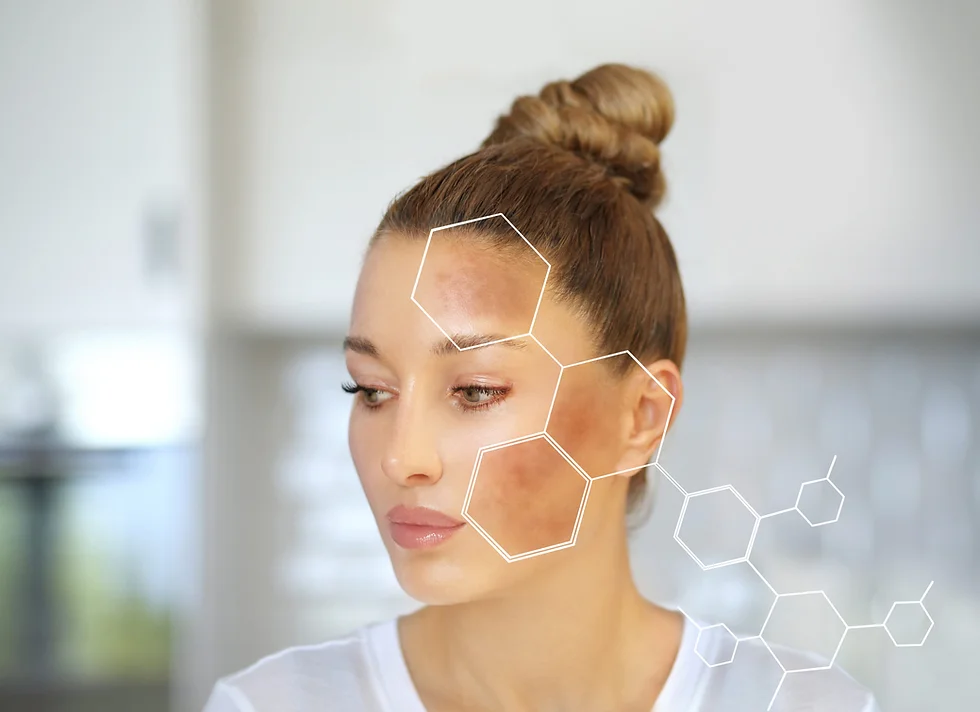The sun provides warmth and essential vitamin D, but excessive exposure to its ultraviolet (UV) rays can cause significant damage to your skin. Sun damage is often visible in the form of sunburns, dark spots, wrinkles, and premature aging. Over time, prolonged sun exposure can result in deeper skin damage that may require more intensive care. Fortunately, there are effective methods to repair and restore sun-damaged skin. In this blog, we’ll explore how to treat sun damaged skin and help you protect your skin in the future.
Understanding Sun Damaged Skin
Sun damage occurs when your skin is overexposed to the sun’s harmful UV rays. There are two types of UV rays responsible for skin damage:
- UVA rays: These rays penetrate deeper into the skin and contribute to premature aging, wrinkles, and skin laxity.
- UVB rays: These rays cause sunburns and are the primary contributors to skin cancer.
Sun damage manifests in various forms, including sunburn, dark spots (hyperpigmentation), fine lines, wrinkles, and a rough texture. Over time, the skin’s collagen and elastin fibers break down, leading to premature aging. The good news is that with proper care, you can help repair sun-damaged skin and prevent further damage.
How to Treat Sun Damaged Skin
If you’ve spent too much time in the sun and noticed changes in your skin’s appearance, it’s important to take steps to treat sun damaged skin and restore its health. Below are the best treatments and strategies for addressing sun damage and rejuvenating your skin.
1. Use Sunscreen Every Day
The best way to treat and prevent further sun damage is by applying sunscreen regularly. Even if your skin is already damaged, sunscreen is crucial to protect it from further harm. Opt for a broad-spectrum sunscreen with an SPF of 30 or higher. Apply it generously to your face and body every morning, even when it’s cloudy, and reapply throughout the day if you’re outside.
Sunscreen not only prevents further sunburn but also helps to prevent additional pigmentation issues and premature aging. Consistent use of sunscreen will also protect the healing skin and minimize the chances of new sunspots forming.
2. Hydrate and Moisturize
Sun-damaged skin often becomes dry and irritated. Restoring moisture is essential for soothing the skin and supporting its natural repair process. Look for moisturizers that contain ingredients like hyaluronic acid, glycerin, and ceramides to lock in hydration and strengthen your skin’s barrier.
Additionally, consider drinking plenty of water throughout the day to keep your skin hydrated from the inside out. Hydration helps the skin heal faster and supports its natural elasticity.
3. Exfoliate to Remove Dead Skin Cells
Exfoliating sun-damaged skin can help accelerate the skin’s renewal process by removing dead cells and encouraging the growth of fresh, healthy skin. Exfoliation also improves the appearance of sunspots and uneven skin tone. However, it’s important not to over-exfoliate, as this can further irritate already-sensitive skin.
You can use a gentle physical exfoliator (like a scrub) or a chemical exfoliant (such as alpha hydroxy acids or beta hydroxy acids) to slough off dead skin. Regular exfoliation, 1-2 times a week, can significantly improve skin texture and reduce the appearance of dark spots over time.
4. Treat Dark Spots with Brightening Ingredients
If you have sun spots or hyperpigmentation, certain ingredients can help lighten and even out your skin tone. Look for skincare products containing:
- Vitamin C: This antioxidant brightens the skin and reduces pigmentation, making it a great option for treating sun spots and uneven skin tone.
- Niacinamide: Known for its anti-inflammatory properties, niacinamide can help reduce redness, lighten dark spots, and improve skin texture.
- Alpha Arbutin: This is another effective ingredient for fading sunspots and evening out skin tone.
These ingredients can help lighten dark spots and promote a more even complexion. Apply these products consistently to see long-term improvements in your skin tone.
5. Use Retinoids for Skin Repair
Retinoids are a powerful class of ingredients that accelerate skin cell turnover, which helps repair sun-damaged skin. Retinoids, such as retinol and prescription-strength tretinoin, help stimulate collagen production, smooth fine lines, and improve the texture and tone of the skin.
If you’re new to retinoids, start slowly, applying them 2-3 times a week, and gradually increase use. Retinoids can increase skin sensitivity to the sun, so make sure to use them at night and always follow up with sunscreen during the day.
6. Seek Professional Treatments
For more severe sun damage, professional treatments can provide faster and more noticeable results. Consult with a dermatologist to explore options such as:
- Chemical Peels: A chemical peel involves applying a solution to the skin that exfoliates the outer layer, removing damaged skin and encouraging the growth of new, healthy skin. It can help improve the appearance of sun spots and fine lines.
- Laser Treatments: Laser treatments like fractional CO2 lasers and IPL (Intense Pulsed Light) can target sunspots, hyperpigmentation, and wrinkles. These treatments stimulate collagen production and help improve skin texture and tone.
- Microneedling: Microneedling involves tiny needles that create controlled micro-injuries in the skin to stimulate collagen production and improve skin texture. This treatment can help reduce sunspots and fine lines caused by sun damage.
These treatments are more invasive but can offer significant improvements for individuals with deeper or more stubborn sun damage.
7. Consider Antioxidants for Protection
Antioxidants help protect the skin from further damage by neutralizing free radicals that can cause oxidative stress. In addition to using antioxidant-rich skincare products like Vitamin C, consider incorporating antioxidants into your diet by eating foods rich in vitamins A, C, and E, such as fruits, vegetables, and nuts. These nutrients help support skin health and prevent further damage from environmental factors.
8. Be Gentle with Your Skin
Sun-damaged skin can be irritated and inflamed, so it’s important to be gentle with it. Avoid using harsh cleansers, scrubs, or hot water, as these can strip your skin of its natural oils and worsen irritation. Instead, use a mild, hydrating cleanser and lukewarm water to cleanse your skin.
Opt for soothing ingredients like aloe vera, chamomile, or calendula, which can help calm and cool sunburned skin.
Conclusion
Sun damage is a serious concern that can affect the skin’s appearance and overall health. However, by following a skincare routine that focuses on hydration, exfoliation, and the use of brightening and repairing ingredients, you can effectively treat sun damaged skin and restore a youthful glow.
Incorporate sunscreen into your daily routine, and consider professional treatments if you’re dealing with more severe sun damage. Remember that prevention is key to protecting your skin from future harm, so always be proactive about sun protection.
With the right care and commitment, you can treat sun-damaged skin and enjoy a more radiant, even complexion.







